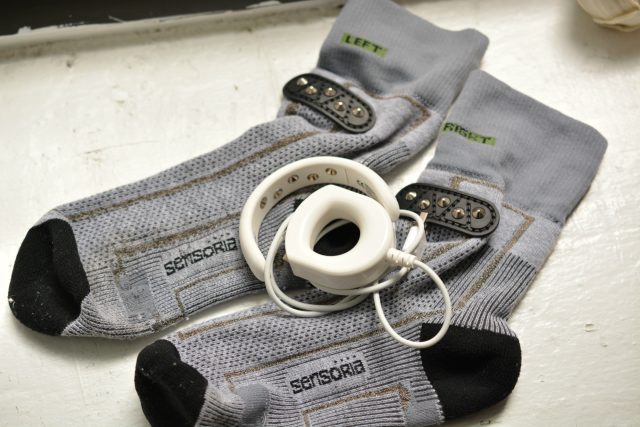
Most of the smart clothing in the spotlight up to now has been fitness-related: socks that monitor running strides, shirts that measure heart rate, and other similar devices. While fitness is an obvious avenue for intelligent garments, some scientists are focusing on a more simple approach to smart fabrics. A recent New Scientist article highlights a number of research groups developing smart clothing and fabrics that “adapt to the environment of the wearer’s body” to control body temperature.
These early developments are essentially about comfort, the premise being that a smart shirt could help you stay warm in a freezing office and cool when you step outside of the office into blistering summer heat. The report notes that aside from keeping us covered, clothing “controls air circulation and alters the amount of heat escaping from the body”; researchers are figuring out how they can best manipulate that process to make our clothing work a little harder for us in any weather.
One of those research groups is taking inspiration from squid—yes, squid. A team from the University of California, Irvine headed by Alon Gorodetsky is trying to control radiative heat similarly to how cephalopods such as squid change colors by reflecting visible wavelengths of light. While the group won’t give any specifics of its technique, it is developing a similar process for longer wavelengths that carry heat. The team has partnered with Under Armour on this project, which isn’t a surprise considering that Under Armour has years of experience in the athletic clothing industry and is also getting into more connected devices with the recent release of its Gemini 2 smart sneakers and HealthBox all-in-one fitness tracking package.
Other researchers are exploring different avenues for temperature control, such as using tiny, circulation-controlling tubes embedded into fabric and garments that transport the body’s own heat to areas where it’s cold and vise versa. While similar temperature-controlling clothes aren’t new, they have been mostly confined to the military, emergency, and space worlds—not to mention that those pieces of clothing are heavy and expensive as they are made for specialty use. Some athletic companies, such as Nike with its AeroLoft line, combine insulation, ventilation, and a number of other features to create more comfortable and functional clothing for athletes. But even those garments are quite expensive and, in a sense, are made for a specific subset of people.
It appears that these researchers are trying to perfect smart temperature-controlling technology and figure out how to bring it into the mainstream. Much of this research involves manipulating the fabric itself—most fitness-related smart clothing doesn’t have a lot of technology running through it at all. Instead, garments like Sensoria’s smart socks work with a brain pack that both collects data from any sensors in the clothing and shares that information with a mobile app. Given that activity-tracking smart clothes are meant to remove “traditional” wearables from our wrists, strapping something to those garments almost defeats the purpose of wearing “smart clothing” altogether.
Then there’s the problem of price. We don’t yet know how much a temperature-controlling smart blouse might cost, but currently, most athletic smart clothing costs hundreds of dollars. Someone with a vested interest in fitness may be willing to shell out that money, but for most consumers, it’s money that could be better spent elsewhere. Athletic smart clothing is quite niche right now, so it’s promising that researchers are going back to the basics. Clothing is meant to protect our bodies from the elements, be that in an office or out in the wilderness, and a garment that can more intelligently do that is something everyone—athlete or not—can appreciate.
[“source-arstechnica”]
| M | T | W | T | F | S | S |
|---|---|---|---|---|---|---|
| 1 | 2 | 3 | 4 | 5 | 6 | 7 |
| 8 | 9 | 10 | 11 | 12 | 13 | 14 |
| 15 | 16 | 17 | 18 | 19 | 20 | 21 |
| 22 | 23 | 24 | 25 | 26 | 27 | 28 |
| 29 | 30 | |||||
























